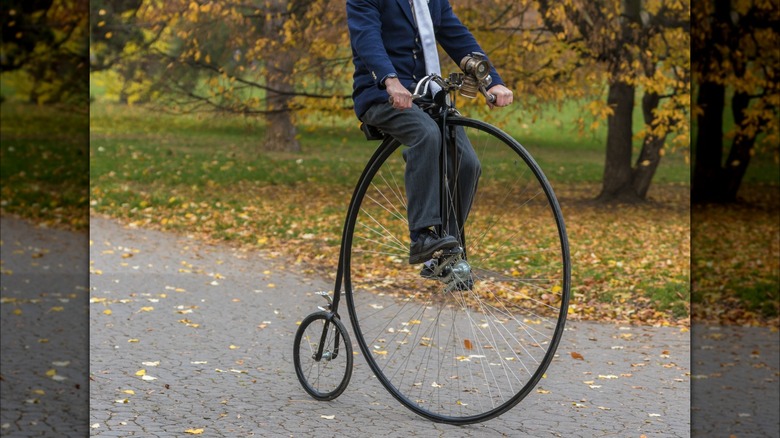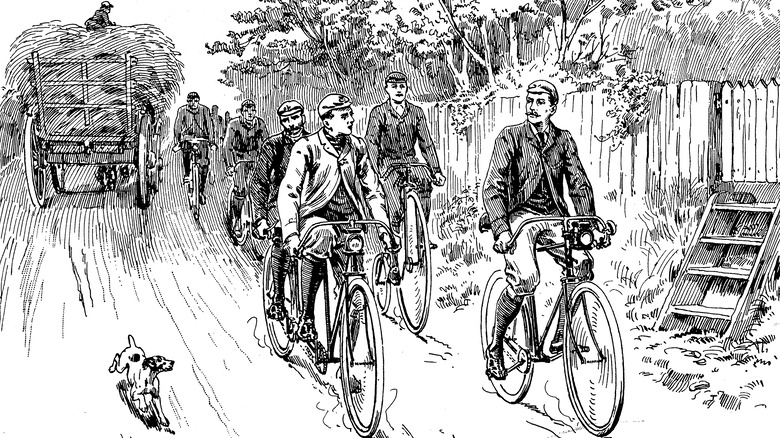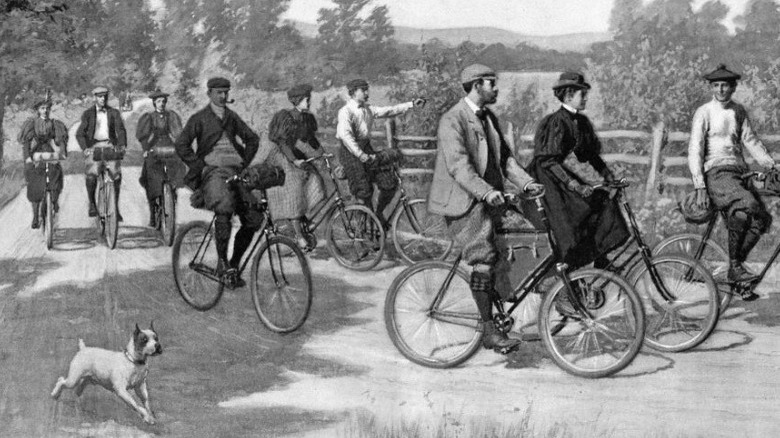The Cyclist's Friend In 1900s England Was A Lot More Dangerous Than It Sounded
Cycling, for many, is a calm, eco-friendly pursuit. It evokes memories of carefree weekend cycle trips, of teaching children to cycle, perhaps of picnics and such.
The fact is, though, cycling can be a hazardous business. The Tour de France, perhaps the most acclaimed cycling race in history, has seen its share of awful incidents and dangerous accidents. In July of 2022, the New York Post reported that Daniel Oss of Italy fractured a neck bone after an appalling collision with a spectator, who seemed to have reached out into the path to get a better angle from which to film the race.
Oss and his fellow competitors, of course, are among the creme de la creme of the bicycle world. As any experienced cyclist knows, there's certain equipment that you should just never put foot to pedal without. A bottle of water or such for hydration, for instance. A potentially life-saving helmet, of course. Then there's the Cyclist's Friend, a small gun that seems to have been popular in 1900s England.
The Cyclist's Friend, a formidable firearm
As The Guardian reports, the late 1800s saw enormous developments in bicycle technology. The iconic penny farthing was phased out in England in the 1880s and 1890s, in favor of the chains, frames and quality tires we associate with bicycles today. Most importantly, bicycles gradually became more affordable, meaning that they were no longer a plaything of the rich but a vital source of transportation for many. It was socially revolutionary, and the only mode of transport that was available to many around the world at the time. Broadening those horizons, however, had an inevitable and unwelcome side effect.
Lone cyclists, Historic UK reports, could be targeted by opportunistic thieves. Women, it seems, often reported this, and they particularly delighted in cycling. Charlotte James writes, via British Library, "Bicycles allowed women to escape the prying eyes of their household and provided them with an opportunity to exercise ... giving them a new feeling of self-reliance and freedom."
These very freedoms, however, seemed to be threatened by thieves. The answer to this, it seems, was the heavily-advertised Cyclist's Friend, a small and easily portable handgun.
Cyclists in England didn't have friends for long
The Cyclist's Friend, in one advertisement from the time (via Roads Were Not Built For Cars), was billed as an essential purchase. "No Lady or Gentleman Rider should be without one," T.W. Carryer & Co., Ltd claimed, stating that their "lovely little shooter" was just three inches long and "easily carried in watch-pocket." The advertisement also bears the legend "I fear no tramp," a reference to the thieves who would apparently prey on cyclists.
At the time, per Historic UK, England did not have any laws restricting handguns, and so they could be freely marketed. Things were changing in the country, however, and the popularity of the Cyclist's Friend and other similar weapons would be rather short-lived.
At the turn of the 19th century, the outlet goes on, judge Sir William Grantham dealt with a case in which a tailor had been shot to death. The shooter had purchased a Colt weapon, and Grantham was told by a Colt employee that the model was "advertise(d) ... as suitable for travelers and cyclists ... it is for self-protection, generally from dogs which can get caught up between the wheels and upset the cyclist." Grantham seemed to decide that the dog would be more upset than the cyclist. In late 1901, Historic UK reports, he warned that cyclists who killed somebody with such a weapon faced hanging. In 1903, the country introduced The Pistols Act, the first real attempt to restrict such weapons.


